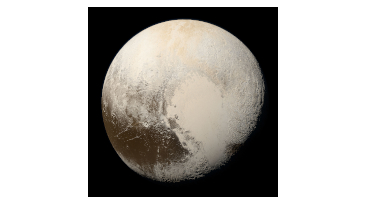- Series:Astronomy, Transcript English
Jude 1:13b
“…wandering stars, to whom is reserved the blackness of darkness for ever.”
 From being a very small boy, I can remember being fascinated by the planets. I had numerous books on the subject. Discovered by Clyde Tombaugh in 1930, it was for decades only seen as a faint disc at the outer reaches of the Solar System.
From being a very small boy, I can remember being fascinated by the planets. I had numerous books on the subject. Discovered by Clyde Tombaugh in 1930, it was for decades only seen as a faint disc at the outer reaches of the Solar System.
In recent years, our knowledge about Pluto has multiplied over and over again. Despite its status being downgraded to that of a mere Dwarf Planet rather than a planet proper, NASA determined to send out a space probe called New Horizons in January 2006. New Horizons finally reached Pluto in January 2015 and sent back invaluable data for about 18 months, with the result that we now probably know more about the surface of Pluto than that of parts of Earth’s ocean floor.
Some surface evidence has caused scientists to think that maybe Pluto was a hot body when it came into existence. This heat could still be there, prompting speculation that there could be a liquid ocean beneath the icy frozen surface.
Whenever water is discovered in the Solar System, thoughts turn to the possibility of life having evolved – especially as Pluto’s surface shows evidence of the existence of methane and ammonia molecules, which scientists always think could provide a synthetic route to organic compounds.
Such interpretations ignore the fact that Earth was created separately from, and three days before, the creation of the other stars and planets. God in His wisdom chose the Earth to be the sole focus of life.
Prayer: We love to learn more about the universe that You created, Lord God, because everything that we learn causes us to praise You more. Amen.
Author: Paul F. Taylor
Ref: University of California – Santa Cruz. “Evidence supports ‘hot start’ scenario and early ocean formation on Pluto.” ScienceDaily, 22 June 2020. <www.sciencedaily.com/releases/2020/06/200622132959.htm>. Image: NASA, Public Domain.
© 2021 Creation Moments. All rights reserved.
